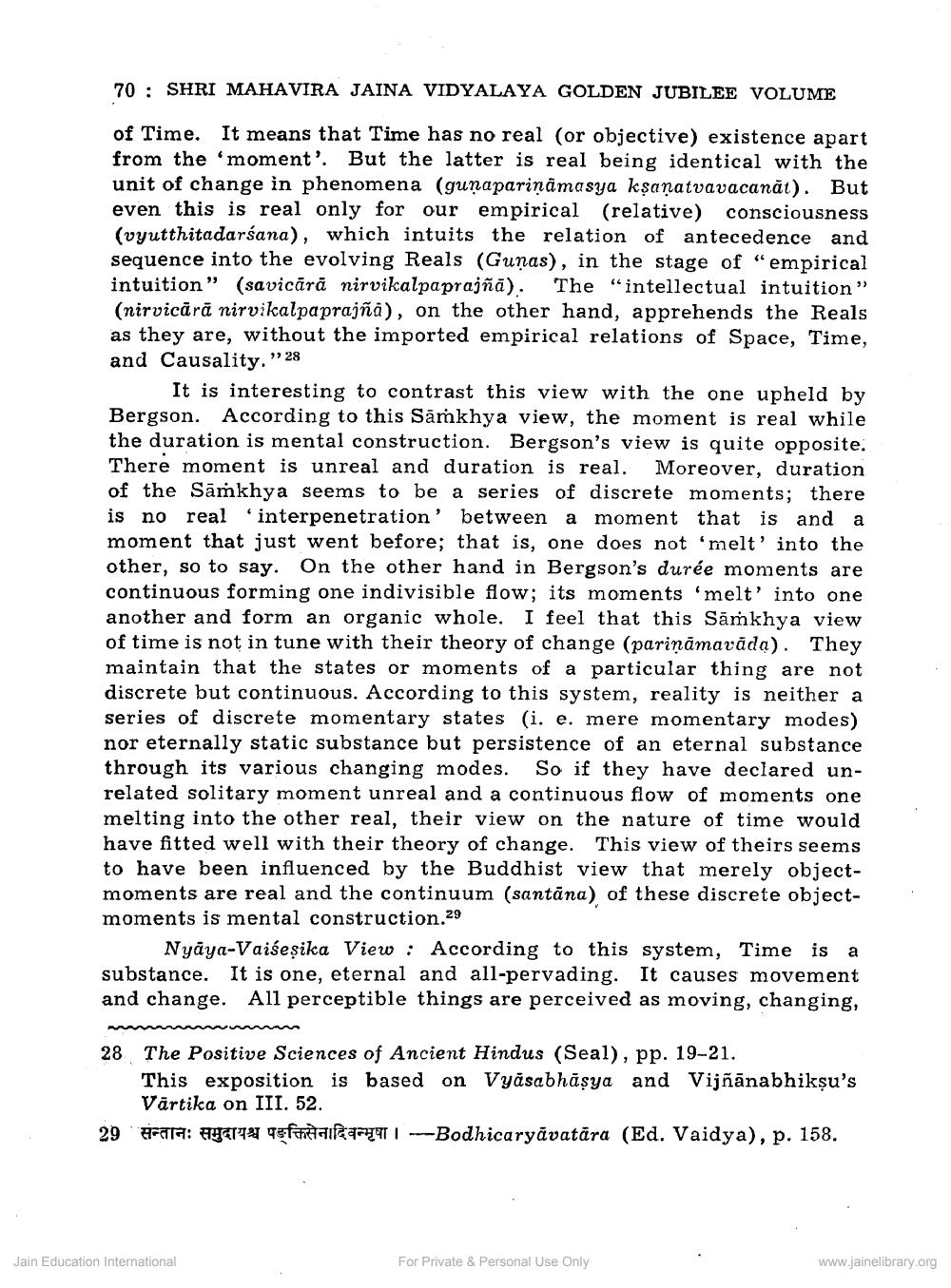Book Title: Nature of Time Author(s): Nagin J Shah Publisher: Z_Mahavir_Jain_Vidyalay_Suvarna_Mahotsav_Granth_Part_1_012002.pdf and Mahavir_Jain_Vidyalay_Suvarna_ View full book textPage 8
________________ 70 SHRI MAHAVIRA JAINA VIDYALAYA GOLDEN JUBILEE VOLUME of Time. It means that Time has no real (or objective) existence apart from the moment'. But the latter is real being identical with the unit of change in phenomena (gunapariņāmasya kṣaṇatvavacandt). But even this is real only for our empirical (relative) consciousness (vyutthitadarsana), which intuits the relation of antecedence and sequence into the evolving Reals (Gunas), in the stage of "empirical intuition" (savicārā nirvikalpaprajña), The "intellectual intuition" (nirvicārā nirvikalpaprajñā), on the other hand, apprehends the Reals as they are, without the imported empirical relations of Space, Time, and Causality. "28 It is interesting to contrast this view with the one upheld by Bergson. According to this Samkhya view, the moment is real while the duration is mental construction. Bergson's view is quite opposite. There moment is unreal and duration is real. Moreover, duration. of the Samkhya seems to be a series of discrete moments; there is no real interpenetration' between a moment that is and a moment that just went before; that is, one does not 'melt' into the other, so to say. On the other hand in Bergson's durée moments are continuous forming one indivisible flow; its moments 'melt' into one another and form an organic whole. I feel that this Samkhya view. of time is not in tune with their theory of change (pariņāmavāda). They maintain that the states or moments of a particular thing are not discrete but continuous. According to this system, reality is neither a series of discrete momentary states (i. e. mere momentary modes) nor eternally static substance but persistence of an eternal substance through its various changing modes. So if they have declared unrelated solitary moment unreal and a continuous flow of moments one melting into the other real, their view on the nature of time would have fitted well with their theory of change. This view of theirs seems to have been influenced by the Buddhist view that merely objectmoments are real and the continuum (santāna), of these discrete objectmoments is mental construction.20 Nyaya-Vaisesika View: According to this system, Time is a substance. It is one, eternal and all-pervading. It causes movement and change. All perceptible things are perceived as moving, changing, 28 The Positive Sciences of Ancient Hindus (Seal), pp. 19-21. This exposition is based on Vyasabhäşya and Vijñānabhiksu's Vārtika on III. 52. dzala: zyciam vyfeitafanya | --Bodhicaryavatāra (Ed. Vaidya), p. 158. Jain Education International For Private & Personal Use Only www.jainelibrary.orgPage Navigation
1 ... 6 7 8 9 10 11 12 13 14 15 16 17 18 19 20 21 22 23 24 25
